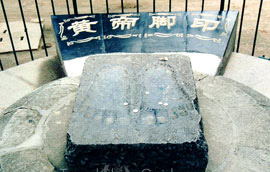| Legole.Com Discover china. Explore the beauty and wonder of the land, people, and culture of China. |
 |
|
|
 |
| |
 about 4,000 thousand years ago, during the time of patriarchal clan community, and was the mystical chief of one of the strongest tribes in the middle valley of the Yellow River. During this period many tribes came to settle around the reach of Yellow River engaging in farming. The different tribes clashed with each other over land disputes as each tribe sought to have more farmland. Since the constant warring caused much suffering to the people, Huangdi decided to put an end to this chaotic situation. He worked out a moral code and trained his army. With his army, after warring 56 battles against other tribes, Huangdi conquered a wide area along the Yellow River and was made chief of the tribal union. Because his tribe honored the virtue of earth, he was given the title, Yellow Emperor, after the yellow color of earth, the symbol of farming. about 4,000 thousand years ago, during the time of patriarchal clan community, and was the mystical chief of one of the strongest tribes in the middle valley of the Yellow River. During this period many tribes came to settle around the reach of Yellow River engaging in farming. The different tribes clashed with each other over land disputes as each tribe sought to have more farmland. Since the constant warring caused much suffering to the people, Huangdi decided to put an end to this chaotic situation. He worked out a moral code and trained his army. With his army, after warring 56 battles against other tribes, Huangdi conquered a wide area along the Yellow River and was made chief of the tribal union. Because his tribe honored the virtue of earth, he was given the title, Yellow Emperor, after the yellow color of earth, the symbol of farming.
As the Yellow Emperor he is remembered as having done many great things. He coined bronze money, practiced medicine, invented boats, raised silk-worms and divided his realm into provinces. The story goes that when Huangdi was 110 years old, a yellow dragon appears in the sky, summoning the emperor to heaven on behalf of the king of heaven. When the emperor riding on the back of the dragon is about to leave, his subjects who were reluctant to let him go, drag him back by his clothes. However, all that was left were only part of the emperor's clothes and hat.
In commemoration of Huangdi, his descendents buried his remains at Mt. Qiaoshan, where they built a mausoleum in honour of him, in present day Shaanxi Province. Tradition passes down from then that every year on the fifth day of the fourth lunar month (the Qingming Festival, also known as the Festival of Pure Brightness) Chinese people of Huangdi's origin, will remember him by coming to visit his mausoleum which has become the symbol of the Chinese nation.
|
|
|
 |
|
